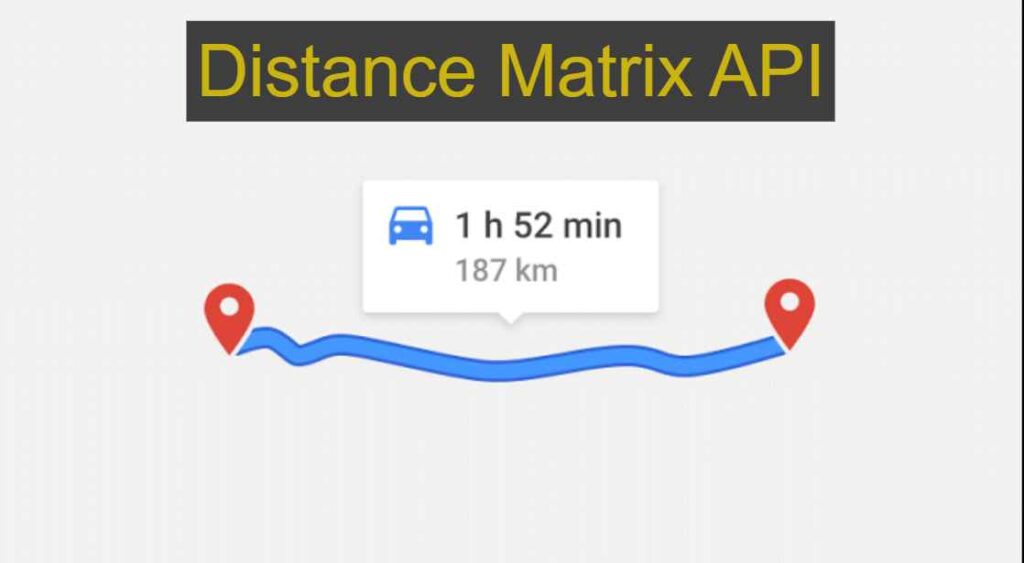Last updated on March 29th, 2024 at 01:22 am
A Distance API is a tool that calculates the distance and time between two or more locations. It is an essential feature for many businesses that need to optimize routes and schedules, such as logistics companies, ride-sharing services, and delivery services. While there are many Distance Matrix APIs available, building a custom one can have significant advantages.
This article will provide an overview of why businesses might consider building their own Distance Matrix API, the technical considerations and challenges involved, the tools and technologies available for building one, and the steps for developing and testing it.
Table of Contents
Reasons for Building a Custom Distance Matrix API
One reason businesses might consider building a custom Distance Matrix API is to have more control over the data and algorithms used to calculate distances and times. This is especially true for companies that operate in specific regions or countries where existing Distance Matrix APIs may not provide accurate or complete information. By building a custom API, businesses can incorporate their own data and algorithms, which can lead to more accurate and relevant results.
Another reason to build a custom Distance Matrix API is to reduce costs. While many Distance Matrix APIs offer free or low-cost plans, these may not be sufficient for businesses with high traffic or complex requirements. By building a custom API, businesses can avoid these costs and only pay for the resources they need.
Finally, building a custom Distance Matrix API can provide businesses with a competitive advantage. By providing more accurate and relevant results, businesses can improve customer satisfaction and gain an edge over competitors.
Technical Considerations and Challenges
Building a custom Distance Matrix API involves several technical considerations and challenges. One of the first considerations is the choice of programming language. While many languages can be used for building APIs, some are better suited than others. For example, Python is a popular choice for building APIs due to its simplicity and flexibility.
Another consideration is the architecture of the API. There are several architectural styles to choose from, including REST, SOAP, and GraphQL. REST is the most commonly used architecture for building APIs and is a good fit for most use cases.
Challenges involved in building a custom Distance Matrix API include data acquisition and processing. Obtaining accurate and comprehensive data can be difficult, especially for businesses that operate in multiple regions or countries. Additionally, processing large amounts of data can be time-consuming and resource-intensive.
Tools and Technologies for Building a Custom Distance Matrix API
There are several tools and technologies available for building a custom Distance Matrix API. The choice of tools and technologies will depend on the specific requirements of the API and the skills of the development team.
One tool commonly used for building APIs is Flask, a lightweight web framework for Python. Flask provides a simple and flexible way to build APIs and can be easily integrated with other Python libraries.
Another tool is PostGIS, a spatial database extension for the PostgreSQL database. PostGIS provides advanced spatial processing capabilities and is well-suited for building Distance Matrix APIs.
Finally, cloud services such as Amazon Web Services (AWS) and Google Cloud Platform (GCP) can provide the infrastructure and resources needed to build and deploy a custom Distance Matrix API.
Steps for Developing and Testing Your Custom Distance Matrix API
Developing and testing a custom Distance Matrix API involves several steps. The first step is to define the requirements of the API, including the locations and data to be included, the algorithms to be used, and the expected output.
Next, the development team will need to acquire and process the necessary data. This may involve using third-party APIs or scraping data from websites.
Once the data has been processed, the team can begin building the API using the chosen tools and technologies. This will involve defining the endpoints, writing the code for the algorithms, and integrating the API with any necessary databases or other systems.
Finally, the API will need to be tested to ensure that it is working correctly and providing accurate results. This may involve using automated testing tools, manual testing, or a combination of both.
Related Articles:
How Cloud Hosting Can Improve Enterprise Customer Experience
Vital overall and technical website indicators to monitor
Conclusion
Building a custom Distance Matrix API can provide businesses with more control over their data and algorithms, reduce costs, and provide a competitive advantage. However, it also involves several technical considerations and challenges, including data acquisition and processing, choosing the right tools and technologies, and testing the API.
By following the steps outlined in this article, businesses can build a custom Distance Matrix API that meets their specific requirements and provides accurate and relevant results.







